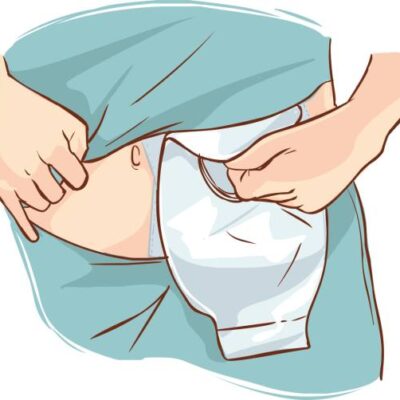Learn how to effectively assess and stage pressure injuries with this practical guide. Prevent, manage, and treat these injuries with expert insights.
Introduction
Pressure injuries, also known as pressure ulcers, can be a significant concern for individuals who are bedridden or have limited mobility. These injuries can lead to pain, discomfort, and even serious complications if not properly assessed and staged. In this practical guide, we will walk you through the essential steps to assess and stage pressure injuries effectively. By understanding the stages of pressure injuries and the factors to consider during assessment, you will be better equipped to prevent, manage, and treat these injuries.
A Practical Guide to Assessing and Staging Pressure Injuries
Understanding Pressure Injuries
Pressure injuries are localized damage to the skin and underlying tissue, usually over a bony prominence, resulting from pressure, friction, or shearing forces. These injuries commonly occur in individuals who spend prolonged periods in one position, such as those confined to a bed or a wheelchair. Understanding the nature of pressure injuries is crucial in developing effective assessment and staging strategies.
Factors to Consider in Pressure Injury Assessment
Assessing pressure injuries involves considering various factors that can affect the development and progression of these wounds. Some essential factors to evaluate during the assessment process include:
- Location: Pressure injuries often occur in areas with prominent bony structures, such as the sacrum, heels, hips, and elbows. Assessing the location of the injury helps determine the appropriate staging and treatment approach.
- Size: Measuring the size of a pressure injury is vital for accurate staging and monitoring. The length, width, and depth of the wound should be recorded using appropriate measurement techniques.
- Wound Bed Appearance: Examining the wound bed can provide valuable insights into the healing process. Factors such as the presence of necrotic tissue, granulation tissue, or infection should be documented.
- Exudate: Evaluating the amount and characteristics of exudate (fluid draining from the wound) helps determine the appropriate dressing and management approach. Excessive exudate or signs of infection may require additional interventions.
- Periwound Assessment: The area surrounding the wound, known as the periwound, should also be assessed. Signs of inflammation, maceration, or surrounding skin damage should be documented.
- Patient Factors: Individual patient factors, such as age, nutritional status, and comorbidities, can significantly influence the healing process. These factors should be considered when assessing pressure injuries.
The Stages of Pressure Injuries
Pressure injuries are classified into different stages based on their severity. Proper staging helps healthcare professionals develop appropriate treatment plans and monitor the healing progress. The stages of pressure injuries are as follows:
Stage 1: Non-Blanchable Erythema
Stage 1 pressure injuries are characterized by intact skin with non-blanchable redness. The affected area may be warmer or cooler than the surrounding skin and may feel tender or firm. Prompt intervention is necessary at this stage to prevent progression.
Stage 2: Partial Thickness Skin Loss
Stage 2 pressure injuries involve partial thickness loss of skin, presenting as a shallow open ulcer or blister. The wound bed may appear pink or red and may also have a surrounding area of intact or ruptured blisters. Proper care and treatment are crucial at this stage to prevent further deterioration.
Stage 3: Full Thickness Skin Loss
Stage 3 pressure injuries are characterized by full thickness skin loss, extending into the subcutaneous tissue but not through the underlying fascia. The wound bed may contain slough (dead tissue) or eschar (dry, black, or brown necrotic tissue). The depth of the wound may vary, and undermining or tunneling may be present. Stage 3 pressure injuries require careful management to promote healing and prevent complications.
Stage 4: Full Thickness Tissue Loss
Stage 4 pressure injuries involve full thickness tissue loss with exposed bone, tendon, or muscle. The depth and extent of the wound may vary, and slough or eschar may be present. These injuries are severe and require immediate medical attention and specialized wound care.
Unstageable: Obscured Full Thickness Skin and Tissue Loss
Some pressure injuries are considered unstageable due to the inability to visualize the full extent of the wound. These injuries may be covered with slough or eschar, making it challenging to determine the depth. Prompt assessment and removal of the necrotic tissue are necessary for proper staging and treatment.
Deep Tissue Pressure Injury
Deep tissue pressure injuries are characterized by persistent non-blanchable deep red, maroon, or purple discoloration. The affected area may be firm or mushy, indicating damage to underlying tissues. These injuries often evolve rapidly and require immediate attention to prevent further progression.
Preventing Pressure Injuries
Prevention is crucial in reducing the incidence of pressure injuries. By implementing effective strategies, caregivers can minimize the risk of these injuries. Here are some essential preventive measures to consider:
- Regular Repositioning: Individuals who are immobile should be repositioned at regular intervals to relieve pressure on vulnerable areas.
- Use of Support Surfaces: Utilize pressure-relieving mattresses, cushions, and overlays to distribute pressure and reduce the risk of injuries.
- Skin Care: Maintain proper hygiene and moisturize the skin regularly to keep it healthy and resilient.
- Adequate Nutrition: Ensure individuals receive a balanced diet with sufficient protein and essential nutrients to promote optimal wound healing.
- Education and Training: Provide education and training to caregivers, patients, and their families on pressure injury prevention and early detection.
FAQs about Assessing and Staging Pressure Injuries
1. What are the common risk factors for developing pressure injuries?
Some common risk factors for pressure injuries include immobility, limited sensory perception, poor nutrition, advanced age, and certain medical conditions such as diabetes and vascular disease.
2. How often should pressure injuries be assessed?
Pressure injuries should be assessed regularly, at least once a day, to monitor their progress and detect any changes that may require intervention.
3. Can pressure injuries be reversed or healed completely?
With appropriate care, pressure injuries can heal completely. However, the healing process may vary depending on the stage and individual factors. Prompt assessment, treatment, and prevention of further damage are essential for optimal healing.
4. Is it necessary to consult a healthcare professional for pressure injury assessment?
While individuals and caregivers can assess pressure injuries to some extent, it is highly recommended to involve a healthcare professional, such as a nurse or wound care specialist, for accurate assessment, staging, and treatment guidance.
5. What are the potential complications of untreated or poorly managed pressure injuries?
Untreated or poorly managed pressure injuries can lead to serious complications, including infection, cellulitis, osteomyelitis (bone infection), sepsis, and even life-threatening conditions. Proper assessment and management are crucial to prevent these complications.
6. How long does it take for a pressure injury to heal?
The healing time for pressure injuries varies depending on several factors, including the stage of the injury, overall health of the individual, and adherence to treatment and preventive measures. Some consistent care. It is essential to follow healthcare professionals’ guidance and maintain regular monitoring to ensure proper healing.
Conclusion
Assessing and staging pressure injuries is a critical aspect of managing these wounds effectively. By understanding the stages of pressure injuries and considering important factors during the assessment process, healthcare professionals and caregivers can develop appropriate treatment plans and preventive measures. Remember to assess the location, size, wound bed appearance, exudate, periwound area, and patient-specific factors during the assessment. Additionally, implementing preventive strategies and promoting optimal wound care can significantly reduce the incidence of pressure injuries.
By following this practical guide to assessing and staging pressure injuries, you are equipped with valuable knowledge to promote healing, prevent complications, and provide the best possible care for individuals at risk. Remember, early detection, prompt intervention, and regular monitoring are essential for achieving positive outcomes in pressure injury management.






No Comment! Be the first one.